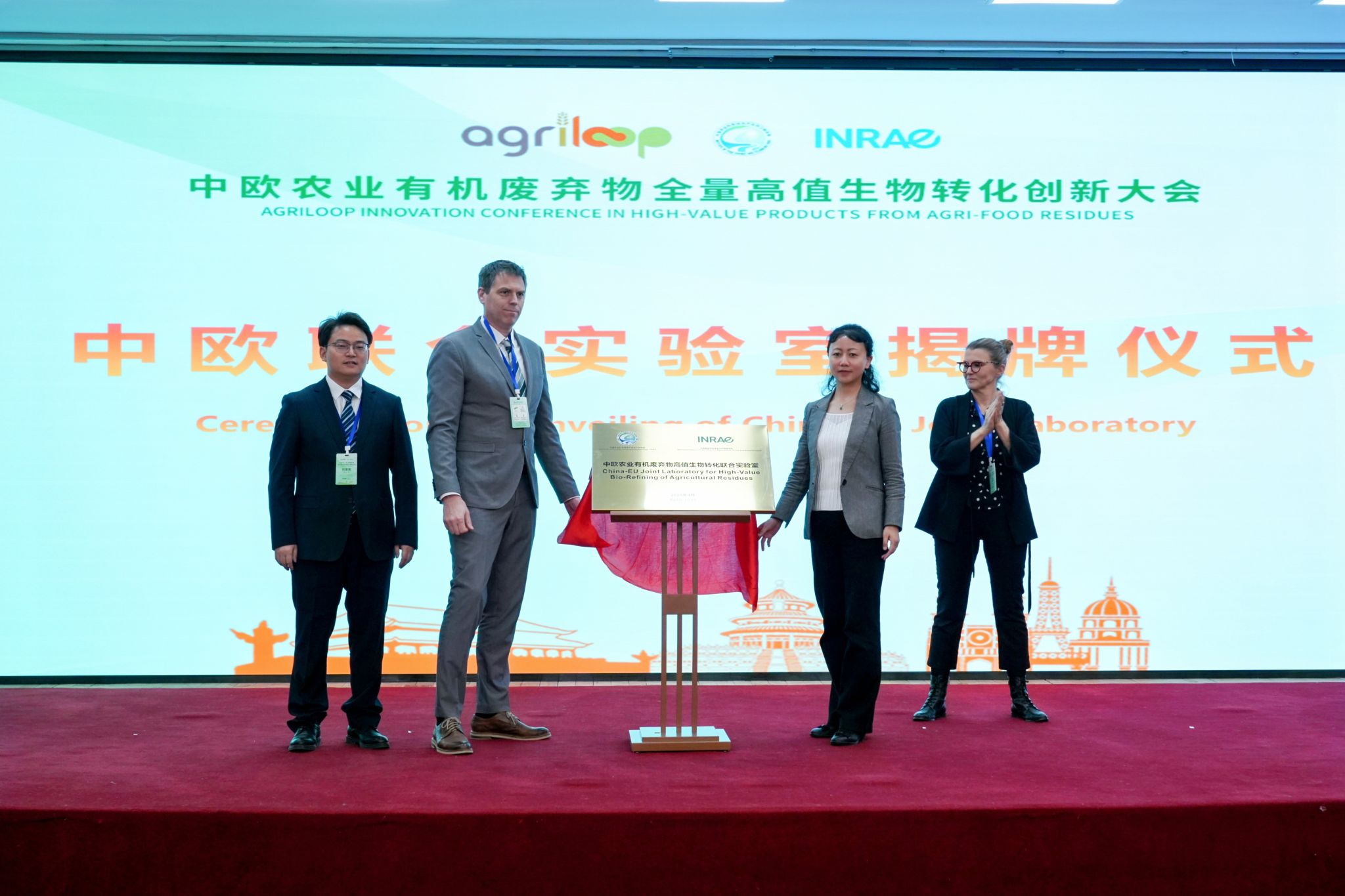
April marked a significant milestone for international collaboration in sustainable agriculture with the inauguration in Beijing of the ‘China-EU Joint Laboratory for High Value Biorefining of Agricultural Residues’. This partnership sits at the heart of the Agriloop project, in which Chinese and European partners are tackling one of agriculture’s biggest challenges: what to do with all the remaining byproducts.
China and the EU collectively generate around 5 billion tons of agricultural leftovers each year. Chinese authorities are proactively addressing this challenge by setting ambitious targets to reduce livestock waste by 75% and crop residues by 86% by 2028. This comprehensive waste reduction strategy is directly aligned with broader climate goals, with the EU aiming for carbon neutrality by 2050 and China by 2060. The joint laboratory represents a concrete step toward this shared environmental vision.
The lab, the result of a partnership between Institute of Food Science and Technology, Chinese Academy of Agricultural Sciences (IFST-CAAS) and the French National Research Institute for Agriculture, Food and Environment (INRAE), was launched on the first day of the Agriloop conference on ‘Innovation in high-value products from agri-food residues’. Alongside the lab, demonstration bases for low-carbon recycling were unveiled, with plaques presented to Shandong Jinsheng, Shandong Youhe, Hebei Nacol, Sichuan Runge, and Beijing AMMS. These Chinese enterprises have an active role in the Agriloop project, putting ideas into real-world practice.
More than 150 delegates attended the official presentation of the initiative by the project coordinators—Nathalie Gontard from INRAE and Aimin Shi from IFST-CAAS. The Audience included senior officials from the Chinese Agency for Rural Energy and Environment, the EU Embassies, as well as researchers and business leaders from both regions.
“The scale of this challenge requires bold international cooperation,” said Rongrong Liu, Deputy Director General of IFST-CAAS. “By working together in this joint laboratory, we’re accelerating progress toward China’s ambitious waste reduction goals, while creating sustainable value chains that benefit our rural economies. We look forward to further strengthening collaboration and exchanges between both sides to jointly explore the sustainable utilization prospects of agricultural organic residues and provide technological support for the global agricultural low-carbon transformation.”
“This laboratory represents a natural evolution of the long-standing partnership between the EU and China,” said Nathalie Gontard, Agriloop Project Manager at INRAE. “With more than two decades of scientific exchanges behind us, we are creating solutions that neither region could develop as effectively on its own. This partnership meets our shared climate goals while creating economic opportunities from materials previously considered low-value or as waste that is harmful to the environment when disposed of. The joint laboratory is not limited to research—it aims to translate our collective knowledge into practical applications that farmers and industries in both regions can implement immediately.”
This joint laboratory is an integral component of the ambitious four-year Agriloop project, which brings together 35 organizations from across Europe and China. Funded by the European Union, the Chinese Ministry of Science and Technology (MOST), UK Research and Innovation (UKRI) and the Swiss State Secretariat for Education, Research and Innovation (SERI), Agriloop aims to address global agricultural sustainability challenges by transforming underutilized agricultural residues into high-value bioproducts. Through innovative safe-and-sustainable-by-design bioconversion processes, the consortium will convert waste from diverse sectors (tomato, soy, potato, brewery, livestock, etc.) into valuable proteins, polyesters, and bio-chemicals for applications across food, feed, health, and materials industries, thereby creating new bio-based markets and contributing significantly to a more sustainable and resource-efficient future for EU and China.